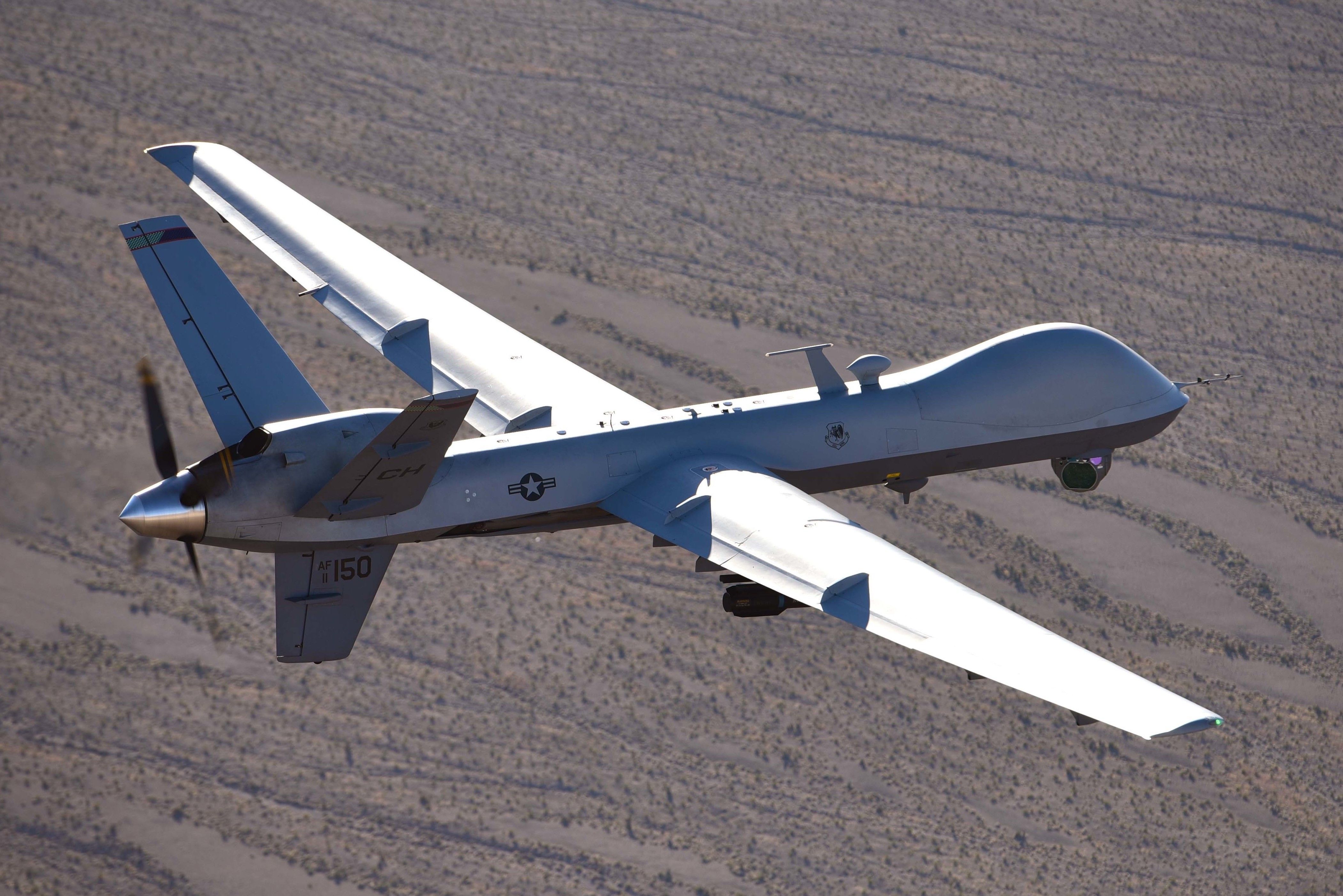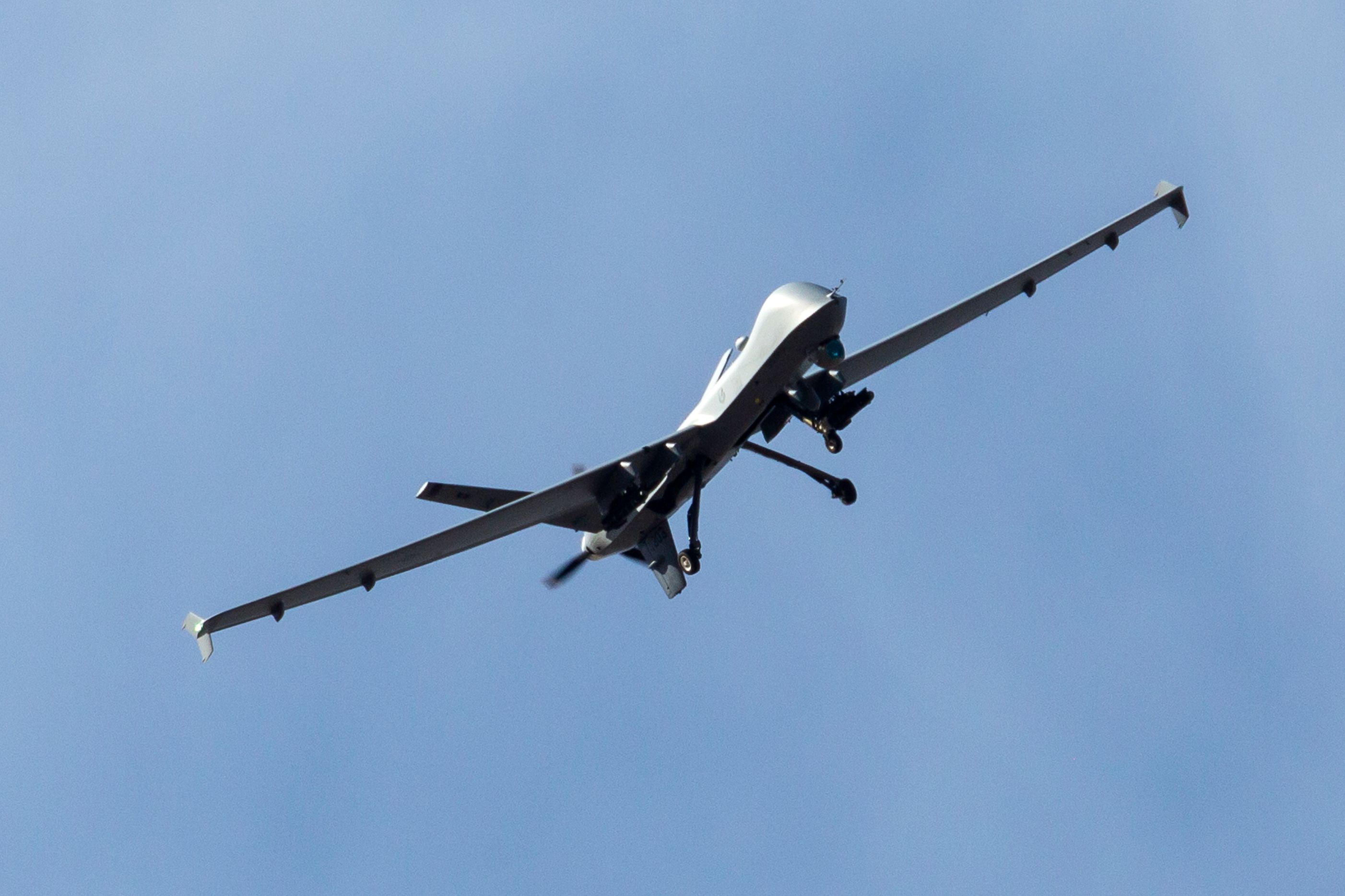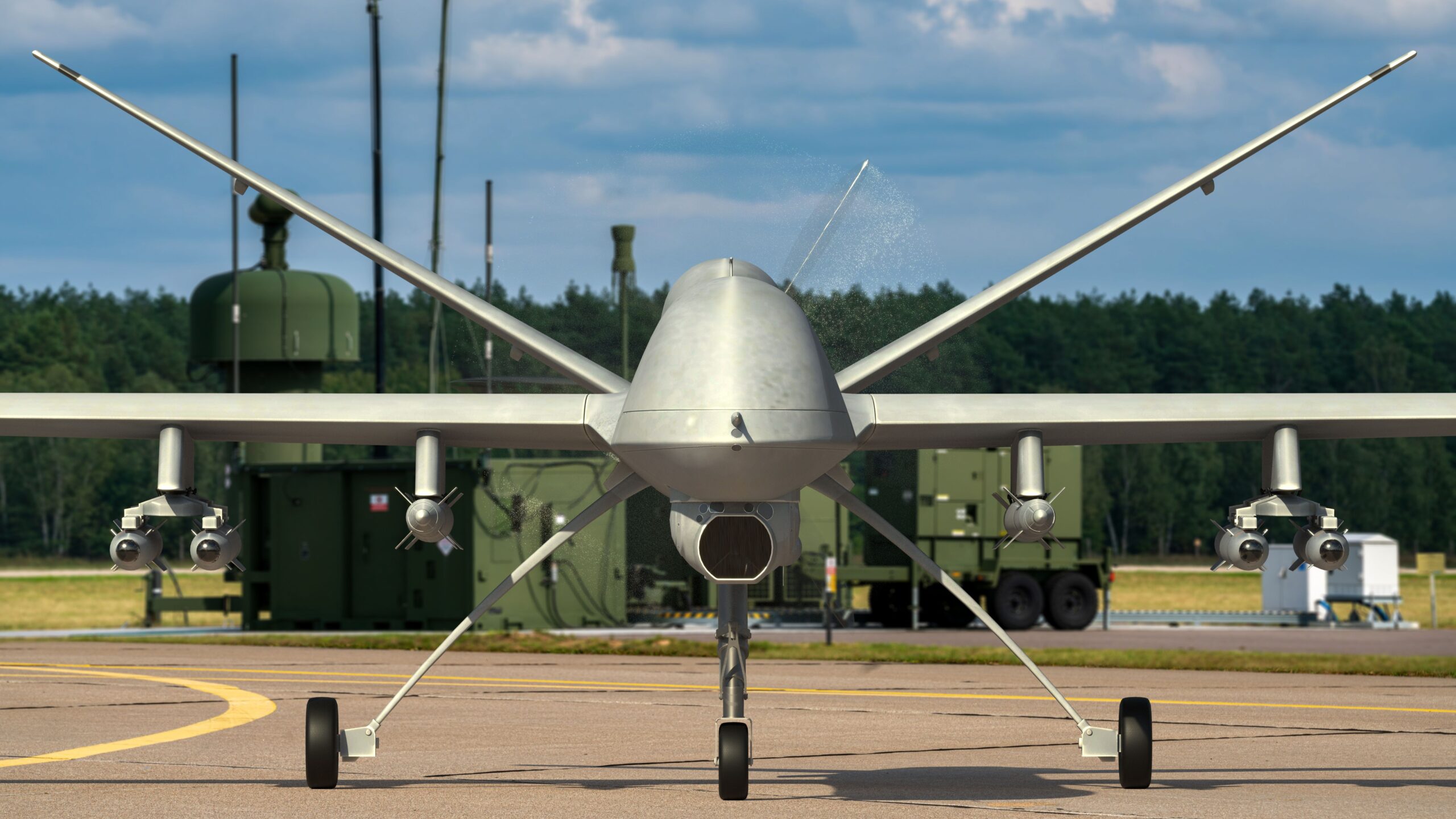Summary
- GA is developing a new ABAD pod for US drones to enhance defense against enemy RF and IR attacks.
- Losses of MQ-9A Reapers prompt the need for enhanced capabilities for early threat detection and engagement.
- Partnerships with BAE Systems and Leonardo DRS will provide advanced IR countermeasure and EW systems.
General Atomics is developing a new Airborne Battlespace Awareness and Defense (ABAD) pod for the US special forces’ MQ-9A Reaper drones. The system will help defend the drones from enemy infrared and radio attacks.
US drones to get new defense pod
Working with the US Special Operations Command (USSOCOM), San Diego-based defense company General Atomics Aeronautical Systems, Inc. (GA-ASI) will develop a new ABAD pod to equip Block 5 Medium-Altitude, Long-Endurance Tactical (MALET) Reaper drones operated by the US Air Force Special Operations Command (AFSOC).
Photo: BlueBarronPhoto | Shutterstock
The system will give each drone enhanced defensive capabilities, bolstering protection from radio frequency (RF) and infrared (IF) enemy attacks. The US has lost several MQ-9A Reapers in the past year, most recently in February when one was downed by a Houthi surface-to-air missile. The new capabilities will not only enable the drones to detect and track enemy activity earlier but also allow for more effective defensive measures in the event of engagement.
GA-ASI President David R. Alexander commented,
“Threat awareness and survivability are critical for MQ-9A to operate in contested environments. ABAD will enable the tracking of RF and IR missile threats, enable defensive measures, and real-time threat awareness for MQ-9A.”
BAE and Leonardo systems
Following an initial evaluation of IR countermeasures and electronic warfare (EW) systems, the company narrowed it down to two selections:
- A next-generation software-defined radio-based EW system supplied by BAE Systems
- AN/AAQ-45 Distributed Aperture Infrared Countermeasure System (DAIRCM) developed by Leonardo DRS
According to Joshua Niedzwiecki, vice president and general manager of Electronic Combat Solutions at BAE Systems, its EW system will allow the Reaper to operate in previously inaccessible airspace and deliver affordable multifunctional defensive capabilities. Engineering and testing work has commenced on the pod with plans to enter service in 2025.

Related
5 Fast Facts About The MQ-9 Reaper Unmanned Aerial Vehicle
The UAV brings a lot to the table.
David Snodgrass, DRS Vice President of the DAIRCM Program, added,
“Leonardo DRS is delighted to team with GA-ASI to provide our industry-leading and proven AN/AAQ-45 DAIRCM aircraft protection system to enhance MQ-9A survivability in support of this mission for USSOCOM.”
DAIRCOM had already been integrated into a previous self-protection pod announced by General Atomics in 2021.
Cyber detection and predictive maintenance
Last week, General Atomics announced a new partnership with cyber firm Shift5 to implement its onboard cyber anomaly detection and predictive maintenance capabilities into the Reaper. According to General Atomics, the platform enables operators to move from data to decisions more efficiently by analyzing critical operational and cybersecurity insights.

Related
US Air Force Awards General Atomics $174 Million To Upgrade MQ-9A Reaper Drones
Work will be completed by 2029.
The MQ-9A Reaper drone is an unmanned combat aerial vehicle (UCAV) that can reach speeds of up to 300 mph – although its typical cruising speed is closer to 200 mph – and is capable of flying up to 27 hours on reconnaissance or strike missions.

